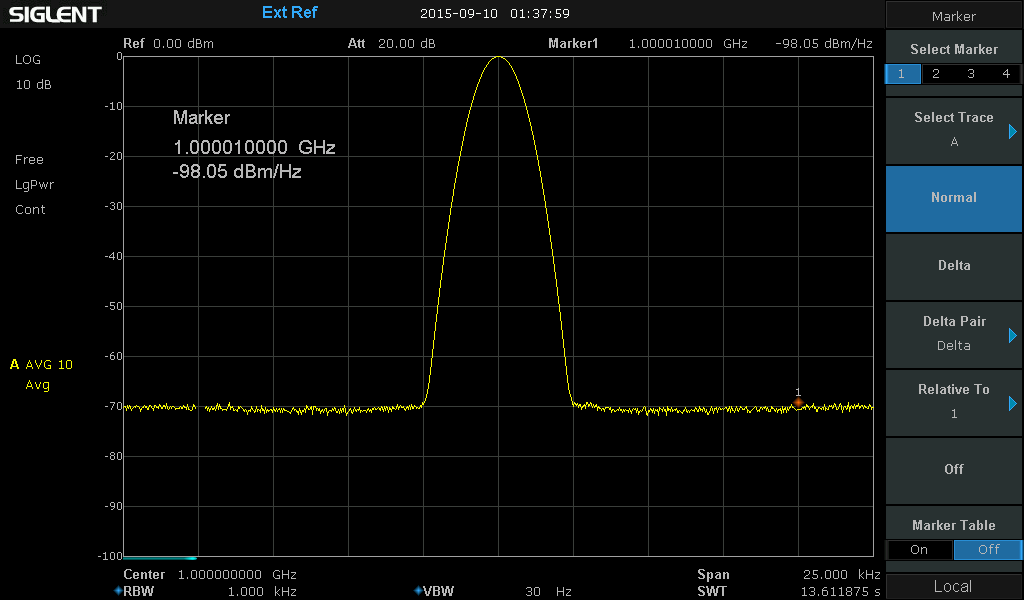Dsa815 Keygen
Rigol DSA-815 Spectrum Analyzer - Product Overview - Duration: 6:32. EEWeb 10,912 views 6:32 RIGOL. Configuration interface. Then, click OK to store the current test report. (*.html) to the specified location. Help information. Click this key to recall the corresponding help document of EMI Test. Spectrum window. It is the main part of the software interface and is used to display the spectrum, frequency axis (X axis),. Advanced Measurement Kit for DSA815 only. Please use order comment field during checkout to provide the serial number of the Rigol scope (if purchased separately). PDF Logo DSA800 Options and Accessories Guide.
Voltage Standing Wave Ratio (VSWR) is a measurement of the impedance match of any RF component, subassembly, instrument in reference to a standard 50-Ohm resistive impedance. It is generally expressed a a ratio of the measured impedance to 50 Ohms. For example, if an antenna measured a VSWR of 2:1 at a particular frequency, this could indicate an antenna impedance of either 100 or 25 Ohms (the impedance deviated from 50 Ohms by either twice or half). This article discusses how to use the Rigol DSA815 to make this measurement. For example, an antenna may measure 1.3:1 at resonance. This would usually be expressed as a VSWR of “1.3”.

In order to use the Rigol DSA815 to make these measurements, it must have the tracking generator option. If you’ve also ordered the VSWR option, the measurement will read out VSWR directly. If you don’t have this option, you can alternatively measure return loss (RL) using just the tracking generator feature. I’ll explain how to use both methods. Return loss method This method is an alternative when the VSWR option is not included.
All that’s required is to measure the return loss (in dB) and use that to calculate VSWR using Equation 1. Figure 1 - Measurement setup for return loss. You’ll need a Mini-Circuits ZF-DC-5 20 dB coupler, or equivalent. Connect short coax cables between the CPL port to the DSA815 RF Input and the OUT port to the tracking generator Gen Output port. The Device to be measured will connect to the IN port of the coupler, but wait until after the normalization procedure to connect it.
Set the frequency limits as desired. Adjust resolution bandwidth to about 30 kHz, or so, for a better dynamic range.
Press TG on the main panel, then TG On in the soft keys, Normalize, Stor Ref, and Normalize On. This will display a normalized (straight) line across the top of the screen at zero dB reference. If you’d like to move this line down, use the Norm Ref Lvl and tuning knob to set this as desired.
Next, connect the device whose port is to be measured (antenna, etc.) to the IN port of the coupler and read off the return loss in dB directly on the screen. In the example of Figure 1, I used a small square of aluminum foil to serve as a counterpoise for the monopole antenna being measured. I extended the telescoping antenna to its full height of 27 inches. By using the Marker, you can measure both the resonant frequency and return loss. Note that classical “return loss” is a positive number, but is represented on the analyzer as a negative number. Just ignore the “minus” sign for purposes of this measurement. Note, also, the primary (double) resonance about 108 and 130 MHz, as well as the odd-order resonances about 338, 561, 780, and 1,000 MHz.
By moving the marker to 130 MHz, we can read the return loss of 18.07 dB. From the Mini-Circuits chart, we see this is equivalent to a VSWR of 1.29:1.
Figure 3 - Measurement setup using the VSWR option is really the same as for the return loss measurement. It’s just that the analyzer will read out VSWR directly.
To use the VSWR measurement option, set the frequency limits as desired, then set the resolution bandwidth at 30 kHz, or so, for a better dynamic range. Be sure the device to be measured is disconnected from the IN coupler port.
Cisdem Data Recovery Keygen Mac. Press the Meas button on the main keyboard, then VSWR On (soft key). Then press Meas Setup on the main keyboard and Cal Open. Connect the device to be measured and press VSWR (soft key).
There will be three traces displayed. The bottom yellow trace is the XXX, the violet trace is the reference trace, and the green trace is return loss. This is the one used to calculate Reflection Coefficient and VSWR, which will be displayed in the lower half of the screen. Many times, I’ll use the Ref Lvl to adjust the lower two traces off the screen, so just the green return loss trace is showing.
Comments are closed.